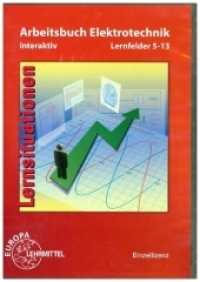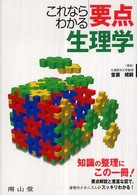- ホーム
- > 洋書
- > 英文書
- > Science / Mathematics
Full Description
Advances in Alzheimer's disease (AD) research have been challenging and without major breakthroughs in understanding its pathological basis. The reigning hypothesis suggests AD is the result of extracellular amyloid deposition that seed to form amyloid plaques, which then grow and kill neighboring neurons. However, there are several inconsistencies with this hypothesis, not to mention the inability to show clinical benefit in several failed clinical trials by pharmaceuticals (i.e., from Pfizer, Eli Lilly, etc.), and it is in the field's best interest to explore and test multiple hypotheses for pathology rather than drive the majority of research on this single amyloid theory. Reviewing many scientifically peer-reviewed publications, this book describes the "Inside-Out" hypothesis on how amyloid escapes the circulatory system through a dysfunctional blood-brain barrier to bind to the alpha 7 nicotinic acetylcholine receptor on pyramidal neurons. Over time, excessive amounts of amyloid appear to be internalized, resulting in neuron death and lysis. This simple mechanism readily explains plaque composition, size, shape, and location. Based on the current direction of research in the field, this hypothesis appears years from any research and development.
Contents
1. Alzheimer's Disease Today2. Seeds of a New Perspective3. Introducing the "Inside-Out" Hypothesis4. Addressing Technical Concerns5. The Good Intentions of Formic Acid6. Connecting MAP-2 and Cell Lysis7. Classifying Plaques8. When is a Star Like a Plaque?9. The Inflammation Cascade10. Innocent Aβ4211. The Alpha 7 Nicotinic Acetylcholine Receptor12. Immunoglobulin: Another Perpetrator13. Add AD to the List of Autoimmune Diseases14. The BBB and BRB in AD15. "Inside-Out" in the Field16. Alzheimer's Disease Tomorrow







